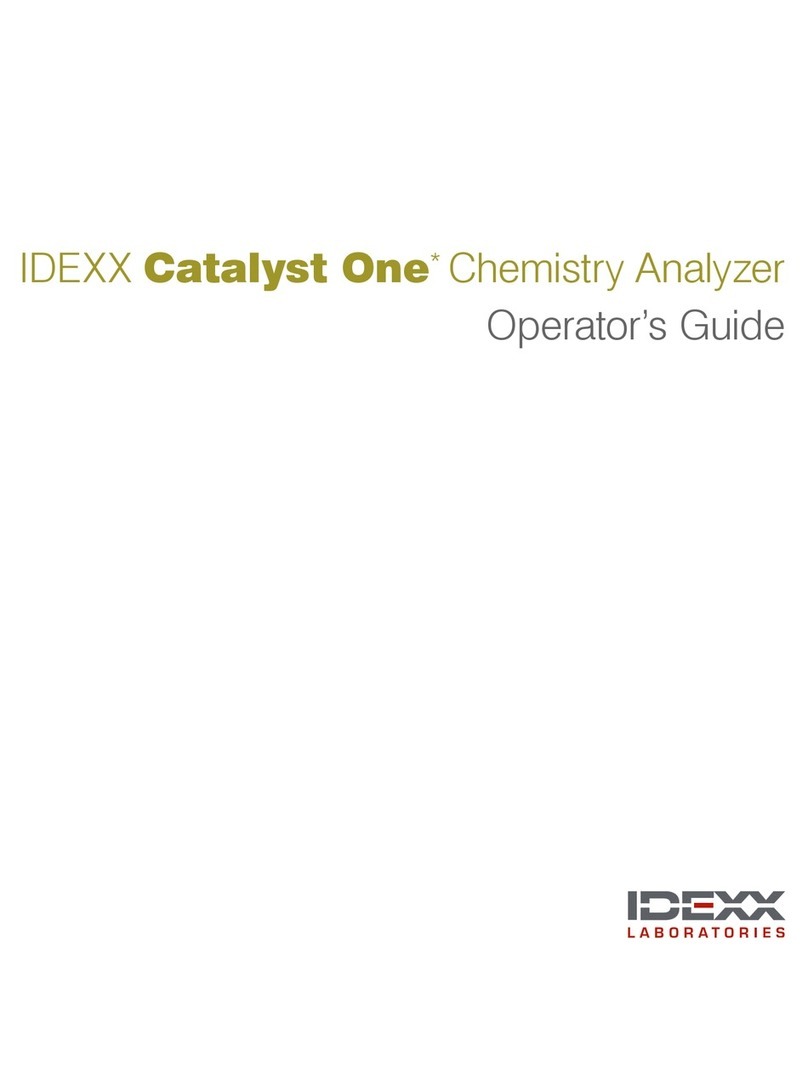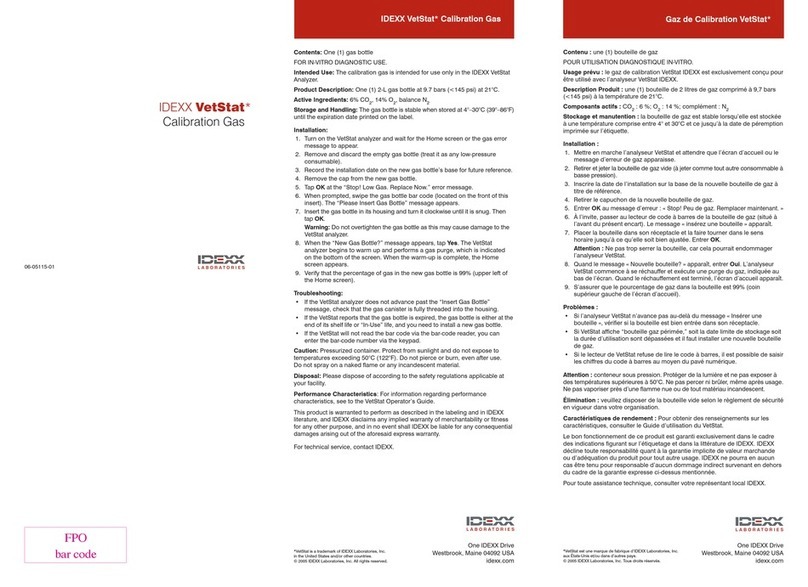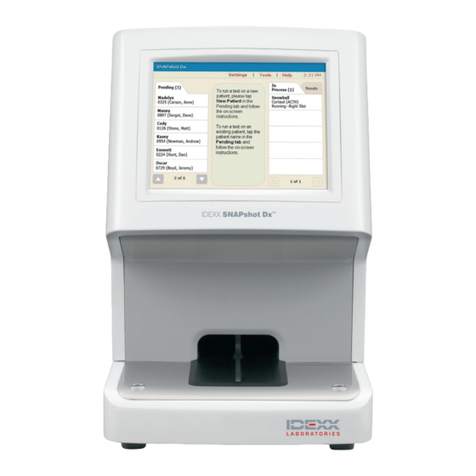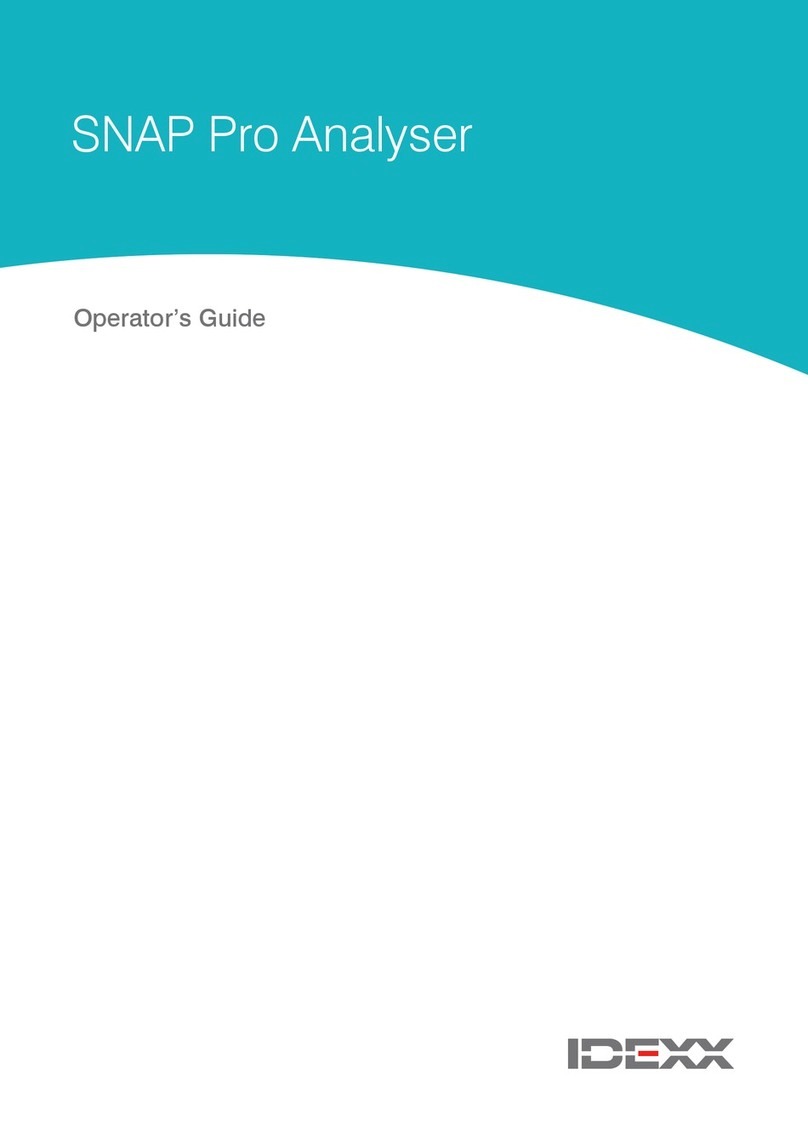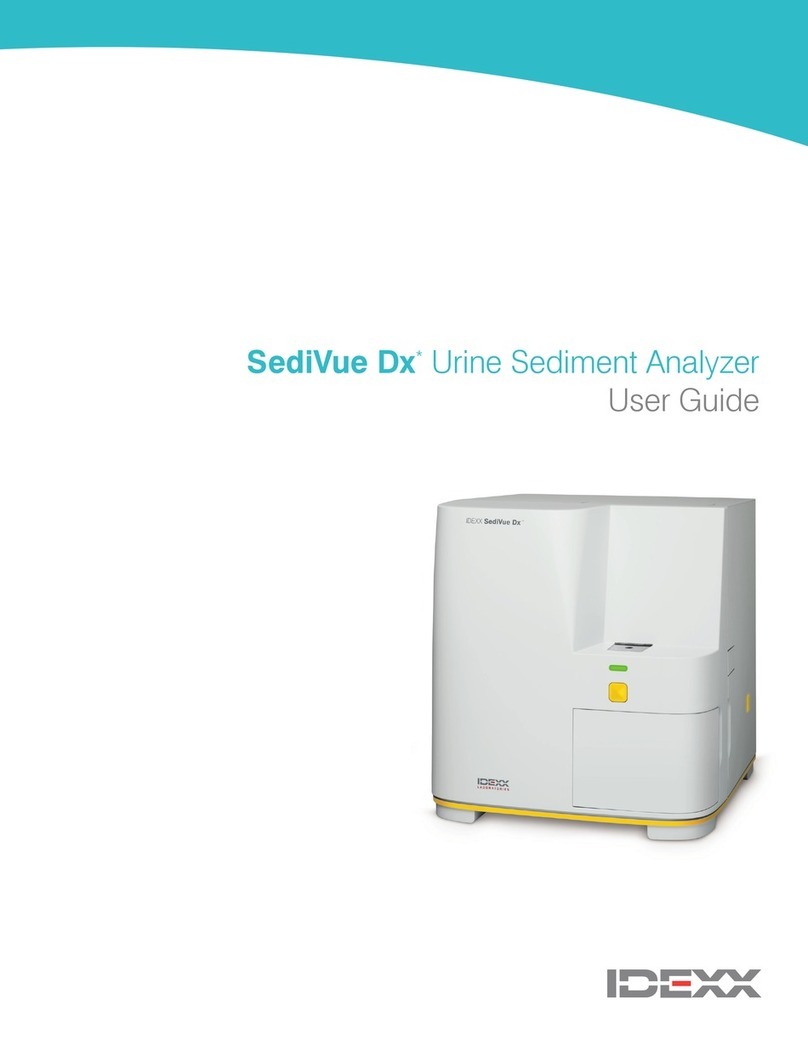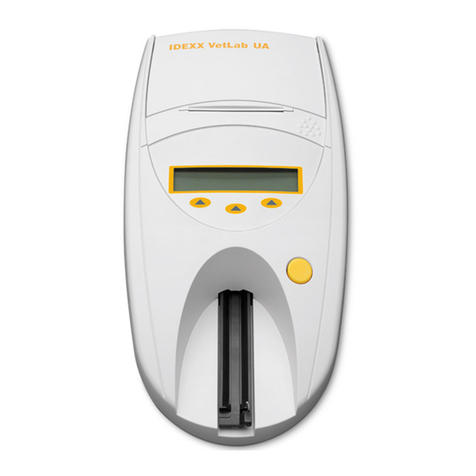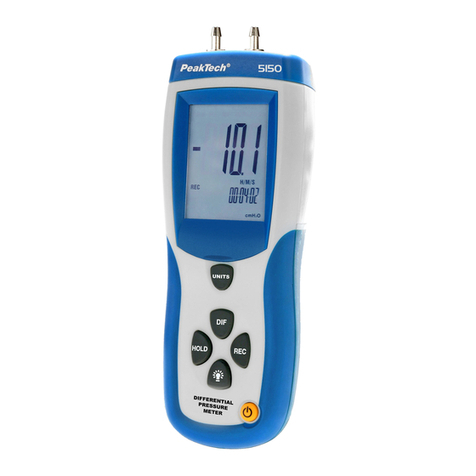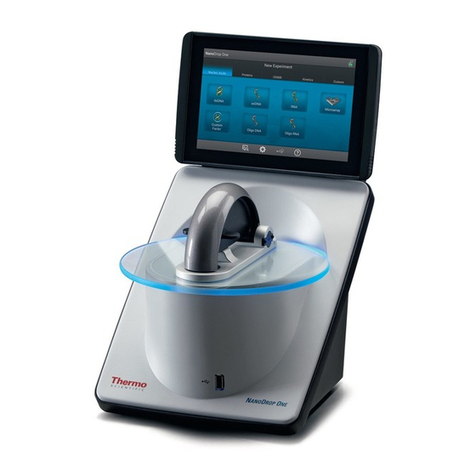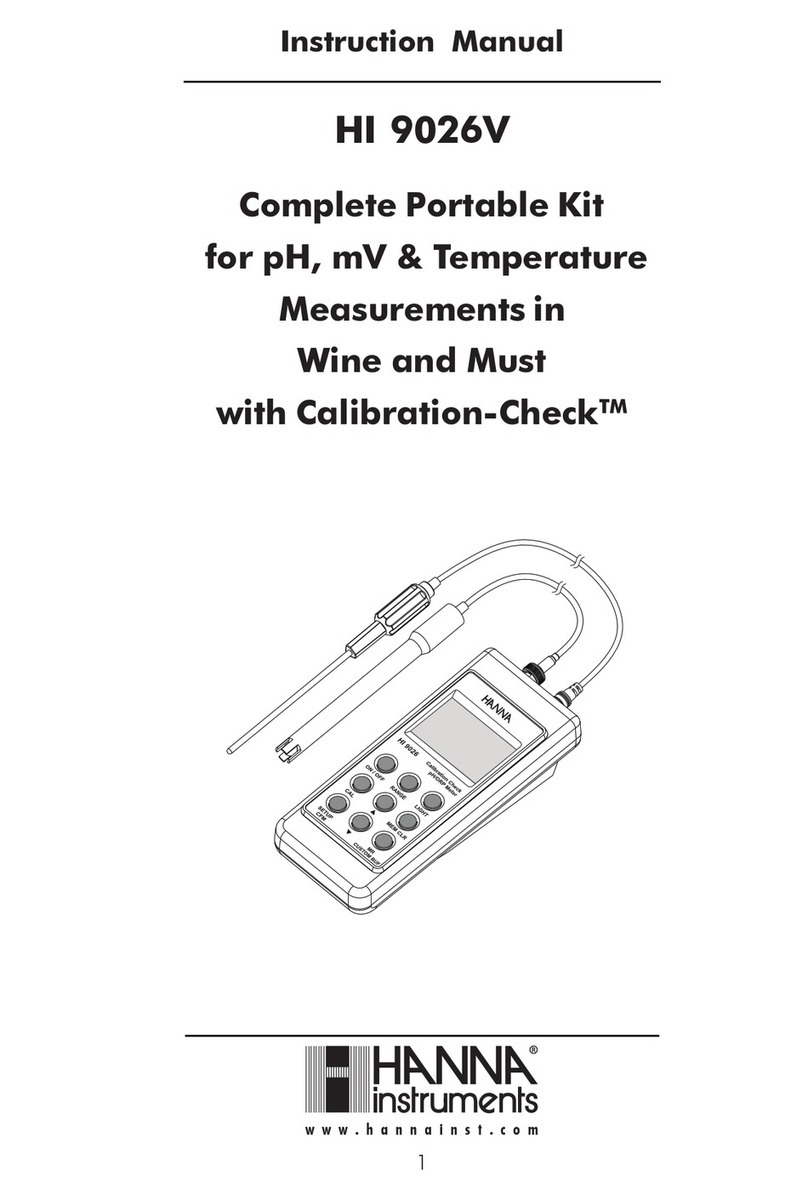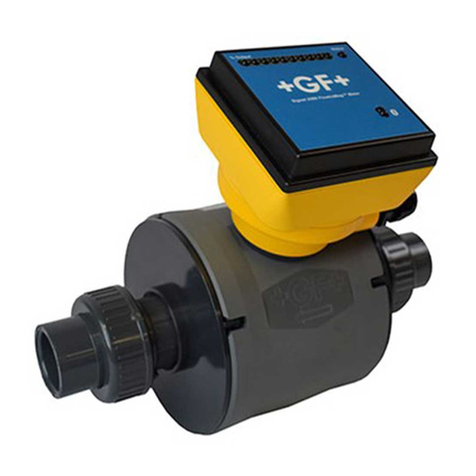Idexx VetTest User manual

Operator’s Manual
IDEXX VetTest*
Chemistry Analyzer


Proprietary Rights Notice
Information in this document is subject to change without notice. Companies, names, and
data used in examples are fictitious unless otherwise noted. No part of this document may
be reproduced or transmitted in any form or by any means, electronic, mechanical, or
otherwise, for any purpose, without the express written permission of IDEXX Laboratories.
IDEXX Laboratories may have patents or pending patent applications, trademarks,
copyrights, or other intellectual or industrial property rights covering this document or
subject matter in this document. The furnishing of this document does not give a license to
these property rights except as expressly provided in any written license agreement from
IDEXX Laboratories.
Ï*%&99-BCPSBUPSJFT*OD"MMSJHIUTSFTFSWFEt
*VetTest, VetTrol, Cornerstone, and SNAP are trademarks or registered trademarks of IDEXX Laboratories,
Inc. or its affiliates in the United States and other countries. All other product and company names and
logos are trademarks of their respective holders.
One IDEXX Drive
8FTUCSPPL.BJOF64"
idexx.com


v
Contents
Preface........................................................................................................................... ix
About this Guide............................................................................................................................... ix
IDEXX Technical Support Contact Information................................................................................. xi
International Symbol Descriptions................................................................................................... xii
General Safety Summary................................................................................................................ xiv
Safety Symbols on the Product............................................................................................... xiv
Connection to a Power Source ............................................................................................... xiv
Personal Safety ....................................................................................................................... xiv
A Important Things to Know About the VetTest* Analyzer....................................A–1
Overview ....................................................................................................................................... A–1
Slide Packaging and Storage....................................................................................................... A–1
Profile Interpretation (Canine and Feline only) ............................................................................. A–1
Star Reference System ................................................................................................................ A–2
:PVS1BSUJDJQBUJPOJO3FGFSFODF3BOHF%BUB$PMMFDUJPO ............................................................... A–2
Software Updates......................................................................................................................... A–2
VetTest Chemistries ...................................................................................................................... A–3
VetTest Species............................................................................................................................. A–
B System Overview and Installation.......................................................................B–1
Choosing the Analyzer Location................................................................................................... B–1
Handling ....................................................................................................................................... B–1
Precautions................................................................................................................................... B–2
Important Electrical Safety Precautions........................................................................................ B–2
Unpacking the Analyzer................................................................................................................ B–2
VetTest Analyzer Components (Front and Back Views) ............................................................... B–3
"DDFTTJOH$PNQPOFOUT*OTJEFUIF3JHIUTJEF$PWFS .................................................................. B–
Connecting the VetTest Pipettor ................................................................................................... B–
Inserting the Paper Roll ................................................................................................................ B–
Inserting the VetTest Software Disk .............................................................................................. B–
Connecting the Power Cord and Turning On the Analyzer........................................................... B–
Adjusting Initial Settings .............................................................................................................. B–
Connecting Your Printer................................................................................................................ B–8
Connecting an External Keyboard ............................................................................................... B–8
Connecting an IDEXX SNAP* Reader Analyzer ........................................................................... B–
C Sample Collection and Preparation....................................................................C–1
Plasma and Serum Collection and Preparation ........................................................................... C–1
Plasma and Serum Sample Volumes ................................................................................... C–1
General Blood Sample Collection Precautions..................................................................... C–1
Serum Sample Preparation................................................................................................... C–2
Plasma Sample Preparation ................................................................................................. C–2
Centrifuged Sample Inspection ............................................................................................ C–3
Urine Sample Collection and Preparation ....................................................................................C–3
Urine Sample Volumes.......................................................................................................... C–
Urine Sample Preparation..................................................................................................... C–

vi
Sample Storage............................................................................................................................ C–
Storing Serum or Plasma Samples....................................................................................... C–
Storing Urine Samples ..........................................................................................................C–
Analysis of Stored Samples .................................................................................................. C–
Combined Chemistry and Hematology Sample Preparation....................................................... C–
D Basic System Operation......................................................................................D–1
Prepare Your Materials and Information ....................................................................................... D–1
Specify a Sample from the Main Menu ........................................................................................ D–1
Enter Patient Species ............................................................................................................D–1
Enter Patient Identification (ID)..............................................................................................D–2
Insert slides................................................................................................................................... D–2
Reading the Bar Codes ................................................................................................................ D–2
Preparing the Pipettor for a Sample ............................................................................................. D–3
Sample Analysis Display .............................................................................................................. D–3
Postanalysis Steps........................................................................................................................ D–
Results .......................................................................................................................................... D–
E Advanced Operations ..........................................................................................E–1
0VUPG-JOFBSJUZ3BOHF4BNQMFT ................................................................................................. E–1
Analyzer Linearity Range ............................................................................................................. E–1
Dilution Protocols.......................................................................................................................... E–2
Plasma and Serum Dilutions................................................................................................. E–2
Urine Dilutions....................................................................................................................... E–3
Running a Dilution on the VetTest Analyzer .......................................................................... E–
Patient Monitoring......................................................................................................................... E–
Combining Results on the Same Sample .................................................................................... E–
F Quality Control ..................................................................................................... F–1
Quality Control Materials ..............................................................................................................F–1
IDEXX VetTrol* Control ..........................................................................................................F–1
VetTest Quality Control Panel .................................................................................................F–2
IDEXX UPRO Control.....................................................................................................................F–3
Preparing the VetTrol Quality Control Fluid....................................................................................F–3
Preparing the UPRO Control .........................................................................................................F–3
Performing the Quality Control Procedure on the VetTest Analyzer .............................................F–
Documenting Quality Control Results ...........................................................................................F–
Performing the Ca Offset Procedure .............................................................................................F–
G Other Maintenance ............................................................................................. G–1
General Upkeep and Cleaning.....................................................................................................G–1
Case Cleaning.......................................................................................................................G–1
Screen Cleaning....................................................................................................................G–1
Dust and Animal Hair ............................................................................................................G–1
Disk Drive Protection.............................................................................................................G–1
Right Side Cover and Rotor Cleaning...................................................................................G–1
Pipettor Cleaning...................................................................................................................G–2
Pipettor Collar Cleaning ........................................................................................................G–2
Used Slide Drawer ................................................................................................................G–2
Temperature Control..............................................................................................................G–2

vii
UV Lamp Replacement ................................................................................................................G–2
Autocalibration..............................................................................................................................G–2
Autocalibration Kit .................................................................................................................G–2
H Chemistry Description and Guide.......................................................................H–1
Introduction to Biochemical Profiling............................................................................................ H–1
Enzymes ....................................................................................................................................... H–1
Enzymes as Indicators of Organ Damage............................................................................H–1
&O[ZNF)BMGMJWFT.................................................................................................................. H–2
Albumin/ALB ................................................................................................................................. H–3
Alkaline phosphatase/ALKP ......................................................................................................... H–
Alanine aminotransferase/ALT (SGPT) ......................................................................................... H–
Amylase/AMYL.............................................................................................................................. H–
Aspartate aminotransferase/AST (SGOT) .................................................................................... H–
Calcium/Ca2+ ............................................................................................................................... H–8
Cholesterol/CHOL ........................................................................................................................ H–
Creatine kinase/CK..................................................................................................................... H–10
Creatinine/CREA......................................................................................................................... H–11
(BNNBHMVUBNZMUSBOTGFSBTF((5 ............................................................................................. H–12
Glucose/GLU .............................................................................................................................. H–13
Lactic Acid (LAC)........................................................................................................................ H–1
Lactate dehydrogenase/LDH ..................................................................................................... H–1
Lipase/LIPA ................................................................................................................................. H–1
Magnesium/Mg2+ ....................................................................................................................... H–1
Ammonia/NH3............................................................................................................................ H–18
Inorganic phosphate/PHOS ....................................................................................................... H–1
Total bilirubin/TBIL....................................................................................................................... H–20
Total protein/TP ........................................................................................................................... H–21
Triglycerides/TRIG....................................................................................................................... H–22
Urea/UREA/BUN......................................................................................................................... H–23
Uric acid/URIC ............................................................................................................................ H–2
Urine Creatinine .......................................................................................................................... H–2
Urine Protein/UPRO.................................................................................................................... H–2
UPC Protocol .............................................................................................................................. H–2
ISelf-Help Guide ..................................................................................................... I–1
Analyzer Power and Function.........................................................................................................I–1
Screen “Failure” Messages ............................................................................................................I–
Temperature Warnings....................................................................................................................I–
Miscellaneous...............................................................................................................................I–10
J Specifications and Warnings............................................................................... J–1
Power Input....................................................................................................................................J–1
Warnings........................................................................................................................................J–1
Interference with Radio Communications .....................................................................................J–1
K Appendix: Differences in Results........................................................................K–1
With a Commercial Laboratory or Other Instrument .................................................................... K–1
With Your Own Expectations......................................................................................................... K–1

viii
L Appendix: Reference Ranges.............................................................................. L–1
Canine—Puppies .........................................................................................................................L–1
Canine—Adults .............................................................................................................................L–2
Canine—Geriatric .........................................................................................................................L–3
Feline—Kittens ..............................................................................................................................L–
Feline—Adults ..............................................................................................................................L–
Feline—Geriatric ............................................................................................................................L–
Equine—Yearlings .........................................................................................................................L–
Equine—Foals ...............................................................................................................................L–8
Equine—Adults..............................................................................................................................L–
Equine—Mares at Stud ...............................................................................................................L–10
Dairy Cows...................................................................................................................................L–11
Beef Cattle ...................................................................................................................................L–12
Llama ...........................................................................................................................................L–13
Sea Turtles ...................................................................................................................................L–1
Provisional Reference Ranges ....................................................................................................L–1
Avian—Parrots .....................................................................................................................L–1
Avian—Cockatoos ...............................................................................................................L–1
Avian—Budgerigar...............................................................................................................L–1
Avian—Cockatiel, Canary, Conure.......................................................................................L–18
Avian—Macaws ...................................................................................................................L–1
Ferret ....................................................................................................................................L–20
Goat......................................................................................................................................L–21
Monkey.................................................................................................................................L–22
Mouse ..................................................................................................................................L–23
Pig ......................................................................................................................................L–2
Rabbit...................................................................................................................................L–2
Rat ......................................................................................................................................L–2
Sheep ...................................................................................................................................L–2
Snake ...................................................................................................................................L–28
Tortoise .................................................................................................................................L–2
Lizard....................................................................................................................................L–30
M Appendix: Unit Conversion ................................................................................ M–1
Conversion Factors.......................................................................................................................M–1

ix
Preface
About this Guide
Use This Section... To Learn About...
A Important Things to Know About
the VetTest* Analyzer
How the analyzer workst
Slide packaging and storaget
Profile interpretationt
Star reference systemt
Software updatest
Available chemistriest
B System Overview and Installation Choosing a locationt
Handling and safety precautionst
Installation and setup procedurest
C Sample Collection and Preparation Plasma and serum collection and preparationt
Urine collection and preparationt
D Basic System Operations Specifying samplest
Inserting slidest
Reading bar codest
Preparing the pipettort
Postanalysis stepst
Reviewing resultst
E Advanced Operations Linearity rangest
Dilution protocolst
Patient monitoring processest
Combining patient resultst
F Monthly QC Procedure Quality control materialst
Preparing the QC materialst
Performing QC procedurest
G Other Maintenance General upkeep and cleaningt
UV lamp replacementt
Autocalibrationt
H Chemistry Description and Guide Biochemistry profilingt
Enzymest
Specific chemistriest
* 4FMG)FMQ(VJEF How to troubleshoot problemst
J Specifications and Warnings Power specificationst
Instrument warningst
Interference with radio communicationst

Use This Section... To Learn About...
K Appendix: Differences in Results Differences in results from the VetTest analyzer ast
compared to other analyzers or your expectations
L Appendix: Reference Ranges Reference ranges for a variety of speciest
M Unit Conversions Conversion factors (U.S. to S.I.)t
x
IDEXX VetTest* Chemistry Analyzer Operator’s Manual

IDEXX Technical Support Contact Information
United States/Canada/Latin America
5PMMGSFF5FDIOJDBM4VQQPSU ...........................................................
5PMMGSFF'BY...................................................................................
www.idexx.com
Europe
5PMMGSFF5FDIOJDBM4VQQPSU .........................................................
5PMMGSFF'BY.................................................................................
Australia
5PMMGSFF5FDIOJDBM4VQQPSU ...............................................................
5PMMGSFF'BY.......................................................................................
www.idexx.com.au
Japan
5PMMGSFF5FDIOJDBM4VQQPSU ..............................................................
5PMMGSFF'BY......................................................................................
www.idexx.co.jp
New Zealand
5PMMGSFF5FDIOJDBM4VQQPSU ..............................................................
Asia
5PMMGSFF5FDIOJDBM4VQQPSU ...................................................
xi
Preface

xii
International Symbol Descriptions
International symbols are often used on packaging to provide a pictorial representation
of particular information related to the product (such as use by, temperature limitations,
batch code, etc.). IDEXX Laboratories has adopted the use of international symbols on
our analyzers, product boxes, labels, inserts, and guides in an effort to provide our users
XJUIFBTZUPSFBEJOGPSNBUJPO
If you are unsure of the meaning for a particular symbol, see the table below for a
description of each symbol that can be found on IDEXX Laboratories packaging.
Symbol Description Symbol Description
Use by
A utiliser avant
Verwendbar bis
Usare entro
Usar antes de
⏝ᮇ㝈
Temperature limitation
Température limite
Zulässiger Temperaturbereich
Temperatura limite
Limitación de temperatura
ಖᏑ ᗘ䠄ୗ㝈䠅
Batch Code (Lot)
Code de lot (Lot)
Chargenbezeichnung (Partie)
Codice del lotto (partita)
Código de lote (Lote)
䝻䝑䝖␒ྕ
Upper limit of temperature
Limite supérieure de température
Temperaturobergrenze
Limite superiore di temperatura
Limite superior de temperatura
ಖᏑ ᗘ䠄ୖ㝈䠅
Serial Number
Numéro de série
Seriennummer
Numero di serie
Número de serie
䝅䝸䜰䝹␒ྕ
Consult instructions for use
Consulter la notice d’utilisation
Gebrauchsanweisung beachten
Consultare le istruzioni per l’uso
Consultar las instrucciones de uso
ྲྀᢅㄝ᭩䜢䛤ཧ↷䛟䛰䛥䛔䚹
Catalog Number
Numéro catalogue
Bestellnummer
Numero di catalogo
Número de catálogo
〇ရ␒ྕ
Keep away from sunlight
Conserver à l’abri de la lumière
Vor direkter Sonneneinstrahlung
schützen
Mantener alejado de la luz solar
Tenere lontano dalla luce diretta
del sole
㐽ග䛧䛶䛟䛰䛥䛔䚹
IDEXX VetTest* Chemistry Analyzer Operator’s Manual

xiii
Symbol Description Symbol Description
Authorized Representative in the
European Community
Représentant agréé pour la C.E.E.
"VUPSJTJFSUF&(7FSUSFUVOH
Rappresentante autorizzato nella
Comunitá Europea
Representante autorizado en la
Comunidad Europea
㻱㻯ෆ䛾ṇつ㈍௦⌮ᗑ
WEEE Directive 2002/96/EC
%JSFDUJWF$&%&&&
8&&&3JDIUMJOJF&(
%JSFDUJWB$&3"&&
%JSFUUJWB3"&&$&
ᗫ㟁Ẽ㟁Ꮚᶵჾᣦ௧䠄㼃㻱㻱㻱㻌㻰㼕㼞㼑㼏㼠㼕㼢㼑㻌
㻞㻜㻜㻞㻛㻥㻢㻛㻱㻯䠅
Manufacturer
Fabricant
Hersteller
Ditta produttrice
Fabricante
〇㐀ඖ
Biological Risks
Risques biologiques
Biogefährlich
Rischi biologici
Riesgos biológicos
⏕≀Ꮫⓗ䝸䝇䜽
Caution, consult accompanying
documents
Attention, consulter les documents
joints
Achtung, Begleitdokumente beachten
Attenzione, consultare la
documentazione allegata
Precaución, consultar la
documentación adjunta
ὀព䚸ῧᩥ᭩䜢䛤ཧ↷䛟䛰䛥䛔䚹
2
Do Not Reuse
Usage unique
Nicht wiederverwenden
No reutilizarw
Non riutilizzare
⏝䛧䛺䛔䛷䛟䛰䛥䛔䚹
Preface

xiv
IDEXX VetTest* Chemistry Analyzer Operator’s Manual
General Safety Summary
Please review the precautions on this page and on the analyzer to avoid personal injury,
fire hazard, or damage to the product. Use of the equipment in a manner not specified
by the manufacturer may impair the equipment’s safety features.
Safety Symbols on the Product
Caution Protective Ground
Earth Terminal
Connection to a Power Source
Use the correct power cord. Use only the power cord specified for this product
and certified for the country of use. Use only a grounded cord, and be sure that the
grounding conductor is connected to the earth ground.
Position the equipment so the power cord is easily accessible.
Use only 2A 250V 5 x 20 slow blow fuse for replacement.
Personal Safety
A pinch point exists between the sample rotor and bridge. Keep your fingers and
any loose clothing away from the rotor if you are running the analyzer with the rotor
cover removed.

A Important Things to Know About the VetTest*Analyzer
Overview
The VetTest* Chemistry Analyzer is a blood and urine testing instrument that analyzes
up to 12 biochemical tests simultaneously, using a single sample of either serum,
plasma, or urine, in about six minutes.
The VetTest analyzer prompts you through a series of steps—offering short “beeps”
at each prompt—that help you prepare the pipettor, introduce the sample and initiate
analysis. After drawing enough total sample, the pipettor dispenses 10 microliters
onto each slide in succession. The sample spreads over the top layer of the slide
and is absorbed. As the sample filters through the layers, biochemical reactions take
place that produce progressive color changes. The VetTest analyzer’s optical system
measures the colors and their intensity.
The analyzer uses three reflectometers operating at six wavelengths to perform both
FOEQPJOUBOESBUFNFBTVSFNFOUT5IFBOBMZ[FSDPOWFSUTUIFTFNFBTVSFNFOUTJOUP
values that are displayed on the analyzer screen and the paper printout.
The analyzer’s software disk contains the calibration data for the various lots of slides.
IDEXX provides free software updates that contain new calibration data for new slide
lots so that you do not have to worry about calibrating them.
Slide Packaging and Storage
Chemistry slides are supplied in cartons and are packaged individually in sealed foil.
Important: Store green boxes in the refrigerator and purple boxes in the freezer. For
convenience, you can store all the boxes in the freezer.
Slides can be used directly from the freezer or refrigerator. You do not need to
bring them to room temperature before using them on the VetTest analyzer.
You can cycle the slides you use most often from cold storage to room temperature
and back on a daily basis up to five times (or one week) without hindering slide
performance. For slides used less often, do not cycle the entire box; just remove
several slides from the box, or remove the slides from storage as needed.
Important: Open the foil package only when you’re ready to run a test. Slides removed
GSPNUIFGPJMNVTUCFVTFEXJUIJONJOVUFTPSCFEJTDBSEFE
Profile Interpretation (Canine and Feline only)
The VetTest analyzer has been set to automatically provide an interpretation of results.
If you do not want the diagnostic interpretation to print automatically, disable it by
choosing Settings at the Main Menu. Press Printer Settings, then press Print
Interpretations, and then 0to disable (see Adjusting Initial SettingsQBHF#GPS
more information.)
Important: The VetTest Profile Interpretation is a software algorithm that is based solely
on results of the specific chemistries run. The more chemistries run, the more specific
the interpretation. The VetTest analyzer cannot make clinical judgments or diagnoses.
A–1

A–2
IDEXX VetTest* Chemistry Analyzer Operator’s Manual
Star Reference System
Note: For adult and geriatric canine and adult and geriatric feline patient samples only.
In addition to providing Profile Interpretation, the VetTest analyzer provides
users with information on the degree of an abnormal result for certain
chemistries. The display and printout includes one (*), two (**), or three
(***) stars, along with the “Hi” or “Lo” indicators, when a test result falls
out of the reference range. The stars serve to identify unusual results
XIJDINBZSFRVJSFTQFDJBMBUUFOUJPOPSGVSUIFSTUVEZ'PSFYBNQMFBPOF
star display indicates a slight to moderate increase or decrease in analyte
DPODFOUSBUJPO"UXPPSUISFFTUBSEJTQMBZIJHIMJHIUTBNPSFTJHOJmDBOU
deviation from the reference range. The particular ranges for the star rating
were developed by G. Daniel Boon, DVM, MS, Dipl. ACVP and A.H. Rebar,
DVM, PhD, Dipl. ACVP. Both are experienced veterinary clinical pathologists
who based their findings on the VetTest analyzer’s database and their
professional judgement.
Stars should be treated as a tool, not to be used alone, but in conjunction with other
interpretive information such as physical examination and additional test results. The
TUBSTZTUFNJTUSBOTMBUFEUPJOEJDBUPSCBSTPOBGVMMQBHFQSJOUPVUGSPNBOFYUFSOBMQSJOUFS
Your Participation in Reference-Range Data Collection
Reference ranges for clinical chemistry analyses are important guidelines used
by veterinarians to determine an animal's health. Reference ranges are typically
established by testing samples from a large group of healthy animals and creating
a statistical distribution of results. In establishing the initial reference ranges for the
VetTest analyzer, IDEXX relied on historical, established normal ranges. An important
priority for IDEXX is to continuously improve the accuracy of these ranges, and we have
that unique ability with each new set of returned software diskettes we receive from our
worldwide user base.
You can contribute to this important work each time you run a test by first enabling your
VetTest analyzer, then indicating if this animal is sick or questionable, or healthy on the
appropriate VetTest analyzer screen display. To do so, first enable the patient “Health
Screen” after installing a new software disk:
From the Main Menu, press1. Settings.
Press2. Health Screen.
Press3. 1to enable Health Screen. (Press 0to disable Health Screen.)
During analysis, a screen will be displayed after the patient identification is entered. This
screen prompts you to indicate if the patient is healthy.
Software Updates
IDEXX will mail you, at no charge, your new software disk containing updated
calibration data for newly produced slides. You should install the new disk promptly
in order to run new slide lots. The new disk also will contain additional enhancements
to the analyzer, such as new menu features and updated reference or quality control
ranges. You will also receive a return mailer for your old software. The returned disk
provides IDEXX with important information concerning reference ranges.
Note: You do not need to perform a quality control procedure after inserting new
software. Keep to your regularly scheduled quality control.
Example of “Hi” result with 3 stars
S/N 06824 Ver. X.X
16-Oct-1007 02:14PM
Adult Canine
Boots
TBIL = 1.64 mg/dl HI***
(0.00-0.70)

A–3
Important Things to Know About Your Analyzer
VetTest Chemistries
*OEJWJEVBMDIFNJTUSJFTJOUFTUBOEUFTUQBDLBHFTBSFBWBJMBCMFGPSUIF7FU5FTU
analyzer. These include:
Individual Chemistry Individual Chemistry
ALB Albumin LAC Lactate
ALKP Alkaline phosphatase LDH Lactate dehydrogenase
ALT (SGPT) Alanine aminotransferase LIPA Lipase
AMYL Amylase Mg2+ Magnesium
AST (SGOT) Aspartate aminotransferase NH3Ammonia
Ca2+ Calcium PHOS Inorganic phosphate
CHOL Cholesterol TBIL Total bilirubin
CK Creatine kinase TP Total protein
CREA Creatinine TRIG Triglycerides
GGT (BNNBHMVUBNZMUSBOTGFSBTF UREA/BUN Urea
GLU Glucose URIC Uric Acid
Note: Globulin is calculated by subtracting albumin from total protein.
Several prepackaged panels and profiles are also available for the VetTest analyzer.
These include:
Profile/Panel Name Included Chemistries
General Health Profile ALB, ALKP, ALT, AMYL, Ca2+, CHOL, CREA, GLU, PHOS, TBIL,
TP, UREA/BUN, GLOB
Preanesthetic Panel ALKP, ALT, CREA, GLU, TP, UREA/BUN
Diagnostic Health Profile ALB, ALKP, ALT, AMYL, BUN, Ca2+, CREA, GGT, GLU, LIPA,
TBIL, TP, GLOB
NSAID Monitoring Panel ALKP, ALT, AST, BUN, CREA
Urine P:C Ratio UPRO (urine protein) and UCRE (urine creatinine); to be used
with a sample preparation kit
Equine Health Panel ALB, ALKP, AST, Ca2+, CK, CREA, GGT, GLOB, GLU, LDH, TBIL,
TP UREA/BUN
Avian Health Profile ALB, AST, Ca2+, GLU, TP, URIC, GLOB
Quality Control Panel ALB, ALKP, ALT, Ca2+, GLU, NH3

"o
IDEXX VetTest* Chemistry Analyzer Operator’s Manual
VetTest Species
$BOJOF 1VQQZNPOUIT
Adult
Geriatric (> 8 years)
'FMJOF ,JUUFONPOUIT
Adult
Geriatric (> 8 years)
Equine Yearling
Foal
Adult
Mare at Stud
Bovine Beef Cattle
Dairy Cow
Avian Budgerigar
Cockatoos (Grey Cheek, Moluccan, Umbrella)
Cockatiel
Canary
Conure
Macaw (Blue and Gold, Hyacinth, Scarlet)
Parrots (Amazon Blue, Amazon Yellow, Eclectus, African Grey)
Ferret
Goat
Lizard
Llama
Monkey
Mouse
Pig
Rabbit
Rat
Sea Turtles
Sheep
Snake
Tortoise

B System Overview and Installation
Choosing the Analyzer Location
Before you set up, choose a work area that is efficient for you and that meets the
physical requirements of the analyzer:
Dimensions:
Width............................................................................ DNJODIFT
Depth ........................................................................... DNJODIFT
Height .......................................................................... DNJODIFT
Height including pipettor ............................................. DNJODIFT
$IPPTFBXFMMWFOUJMBUFEBSFBBXBZGSPNPCWJPVTTPVSDFTPGIFBUDPMEIVNJEJUZ
or vibrations.
'PSPQUJNVNSFTVMUTSPPNUFNQFSBUVSFTIPVMECFCFUXFFO×BOE×$×UP×'
BOESFMBUJWFIVNJEJUZCFUXFFOBOE3PPNUFNQFSBUVSFTCFMPX×$×'
BOEBCPWF×$×'NBZHJWFJODPOTJTUFOUSFTVMUT5IFBOBMZ[FSXJMMPQFSBUFPVUTJEF
this range but the screen may display a “temperature warning” message and results
may show some drift.
Make sure the VetTest* Chemistry Analyzer is not in direct sunlight. The analyzer is a
MJHIUTFOTJUJWFJOTUSVNFOUBOETUSBZMJHIUFOUFSJOHUIFPVUTJEFDBTFXJMMBGGFDUSFTVMUT
Choose a flat, stable surface for the analyzer. Do not move it frequently. Be sure to
leave adequate room for the pipettor and paper roll, and to load slides.
Important:&OTVSFQSPQFSWFOUJMBUJPO'JHVSF#5IF
analyzer’s cooling vents are in the base. Leave at least
UPDNUPJODIFTDMFBSBODFBSPVOEUIF
machine so that air can circulate on all sides.
Do not use the VetTest dust cover when analyzer is on.
Warning: Very low temperatures can cause considerable
damage to the analyzer. Permanent damage may be caused
if the analyzer is switched on at temperatures below freezing.
The VetTest analyzer should be unpacked and allowed
UPDPNFUPSPPNUFNQFSBUVSF×o×$×o×'GPSB
minimum of one hour after it has been in a cold environment.
Handling
Use extreme care when handling the VetTest analyzer. The internal rotor, computer
circuitry, and optical sensors can be damaged if the analyzer is dropped or bumped,
particularly when the machine is turned on. If you must move the analyzer any distance,
VTFUIFPSJHJOBMQBDLBHJOHNBUFSJBMTBOESFJOTUBMMUIFUSBOTJUDMBNQTTFFAccessing
Components Inside the Right-Side CoverQBHF#GPSBEFTDSJQUJPOBOEVTFPGUIF
transit clamps).
Clearance
Airflow
Figure B-1: VetTest analyzer ventilation
B–1

B–2
IDEXX VetTest* Chemistry Analyzer Operator’s Manual
Precautions
Nevert use the VetTest analyzer with the transit clamps in position.
Do nott stack other equipment or containers on top of the VetTest analyzer.
Keep the VetTest analyzer away from sources of heat or flames (e.g., Bunsent
burners).
Do nott QMBDFPSPQFSBUFUIF7FU5FTUBOBMZ[FSOFBS9SBZFRVJQNFOUQIPUPDPQJFST
or other devices that generate static or magnetic fields (e.g., transformers).
Protectt the analyzer from damp conditions or wet weather.
Take care not to spill water or other fluids on the analyzer.t
Do nott use any of the following liquids, abrasives, or aerosol sprays on or near
the VetTest analyzer, as they may damage the outer case and may influence the
analysis results:
– Organic solvents – Insecticides
o "NNPOJBCBTFEDMFBOFST – Disinfectant
– Ink markers – Polish
– Sprays containing volatile liquids – Room freshener
Important Electrical Safety Precautions
Always use the correct AC electrical source.t
Use only the power cable supplied.t
Disconnect the power plug:t
If the power cord or plug becomes frayed or otherwise damaged–
If anything is spilled onto the equipment–
If your equipment is exposed to rain or any excessive moisture–
If your equipment is dropped or the case has been damaged–
If you suspect that your analyzer needs service or repair–
Whenever you clean the case–
Unpacking the Analyzer
The VetTest analyzer is a highly sophisticated piece of equipment and care should be
taken not to damage any of the sensitive components when unpacking and handling it.
The shipping carton should contain the VetTest analyzer, paper roll cover, and paper roll.
:PVMMmOEUIFQJQFUUPSBOEUIFQBQFSSPMMIPMEFSJOTJEFUIFVTFETMJEFESBXFSTFF'JHVSF
#7FU5FTUBOBMZ[FSGSPOUWJFXPOQBHF#5IFDBSUPOBMTPDPOUBJOTUIFGPMMPXJOH
Dust covert
Power cordt
Operator's Manualt
Warranty and return envelopet
Installation certificate and return envelopet
Software diskt
Table of contents
Other Idexx Measuring Instrument manuals
Popular Measuring Instrument manuals by other brands

LI-COR
LI-COR LI-7500 instruction manual
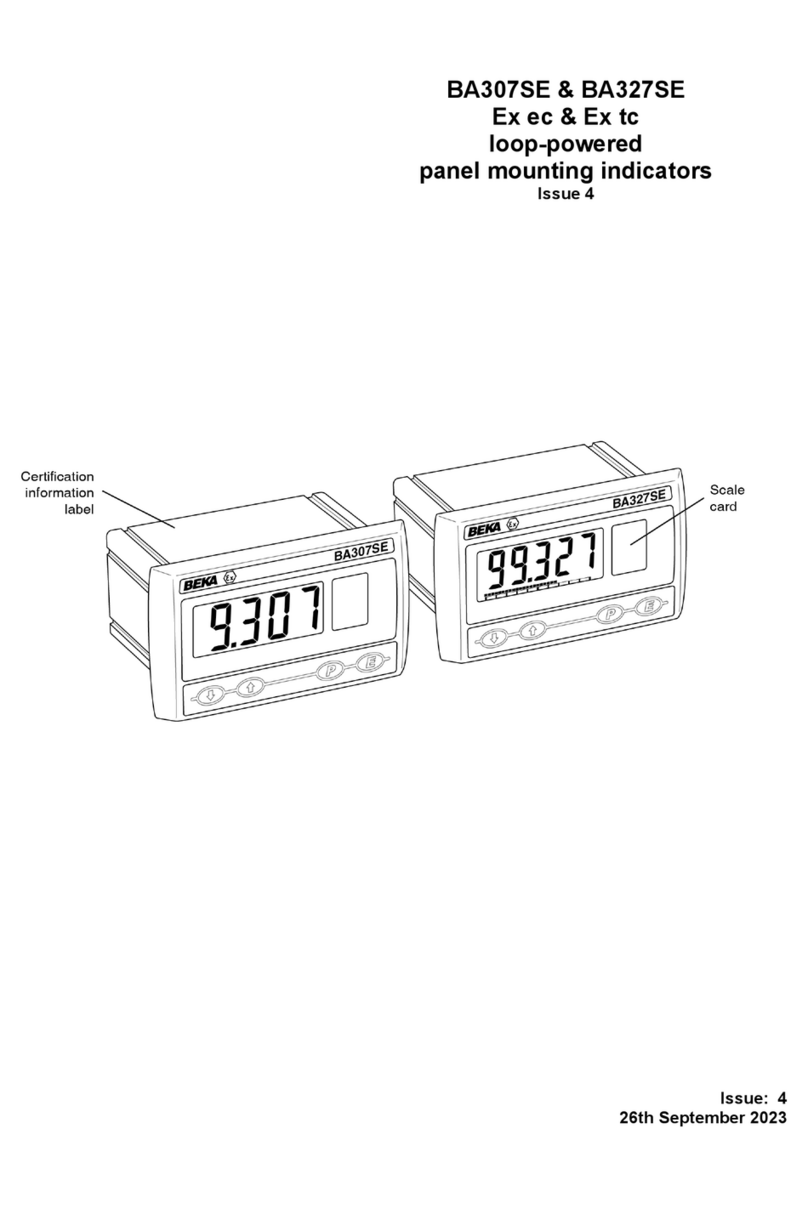
BEKA
BEKA BA307SE manual

Opticron
Opticron Ranger 800 Operation manual
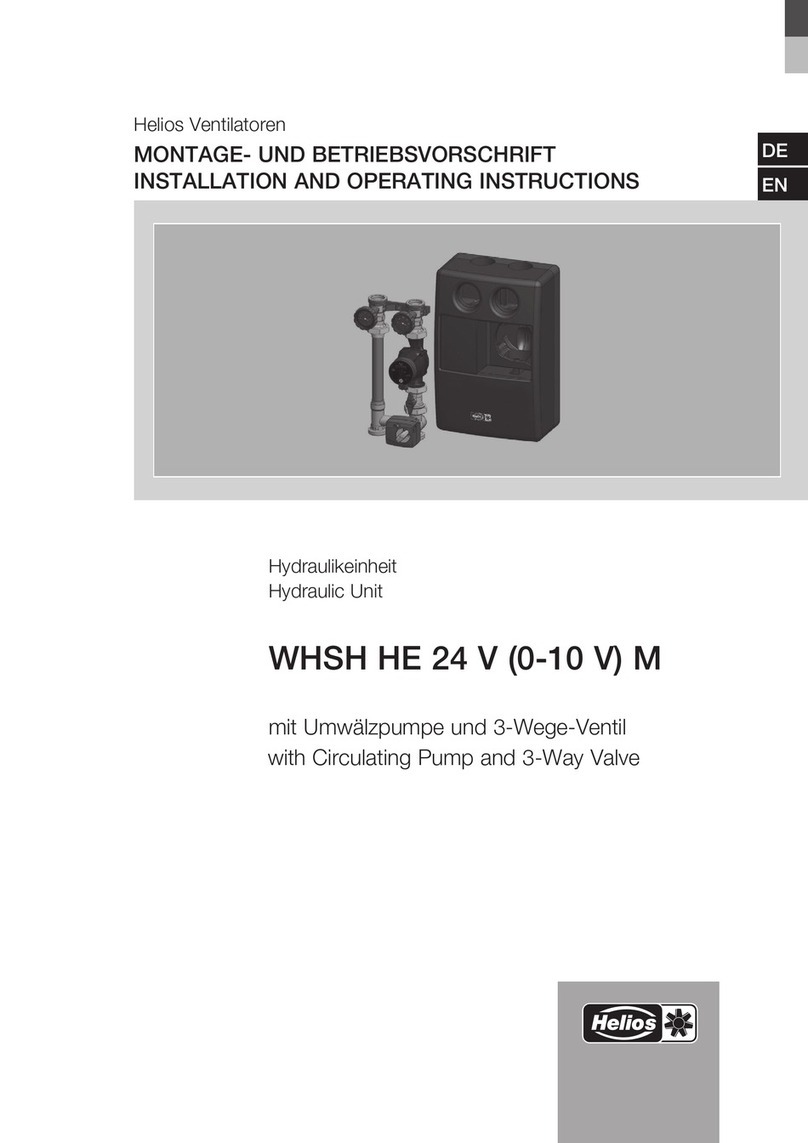
Helios
Helios WHSH HE 24 V (0-10 V) L Installation and operating instructions

Westfalia
Westfalia 83 65 91 instruction manual
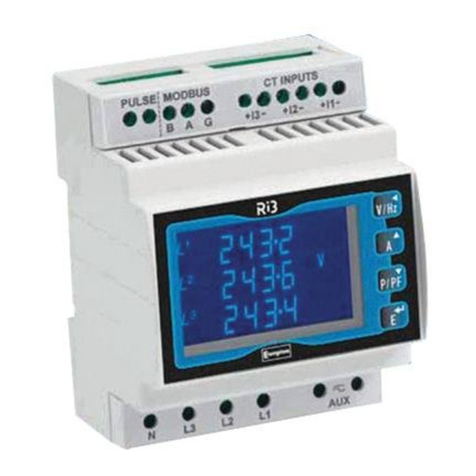
TE Connectivity
TE Connectivity Integra Ri3 Installation and operating instructions
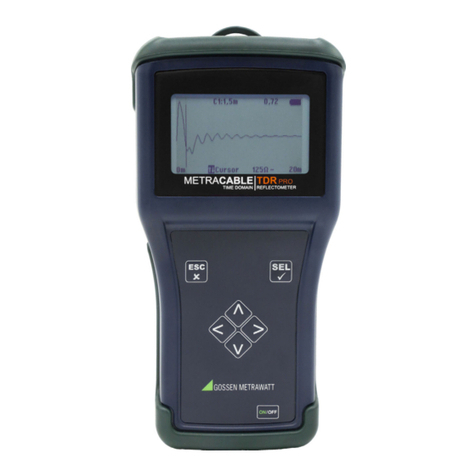
Gossen MetraWatt
Gossen MetraWatt METRACABLE TDR PRO operating instructions
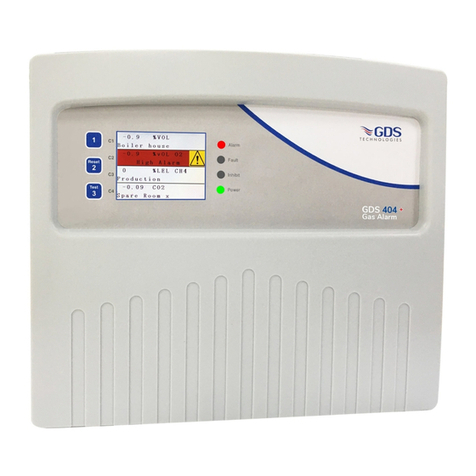
GDS
GDS 404+ Series Operating handbook
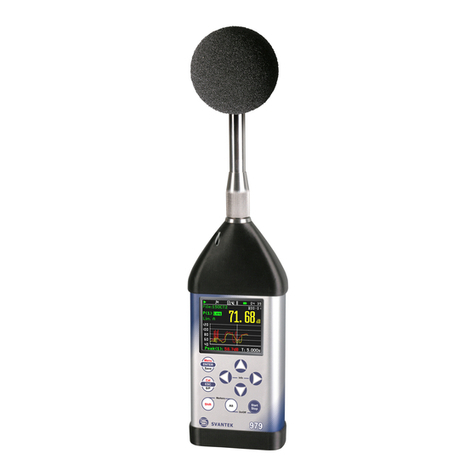
Svantek
Svantek SVAN 979 user manual
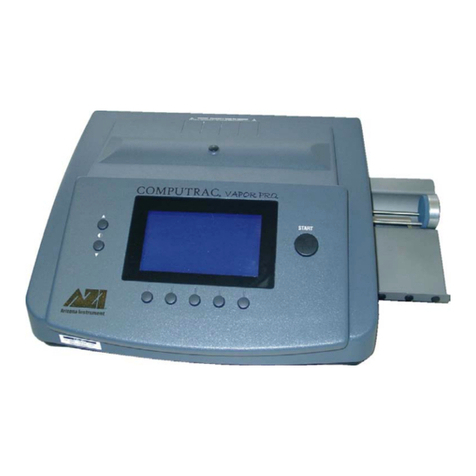
Arizona Instrument
Arizona Instrument COMPUTRAC VAPOR PRO user manual
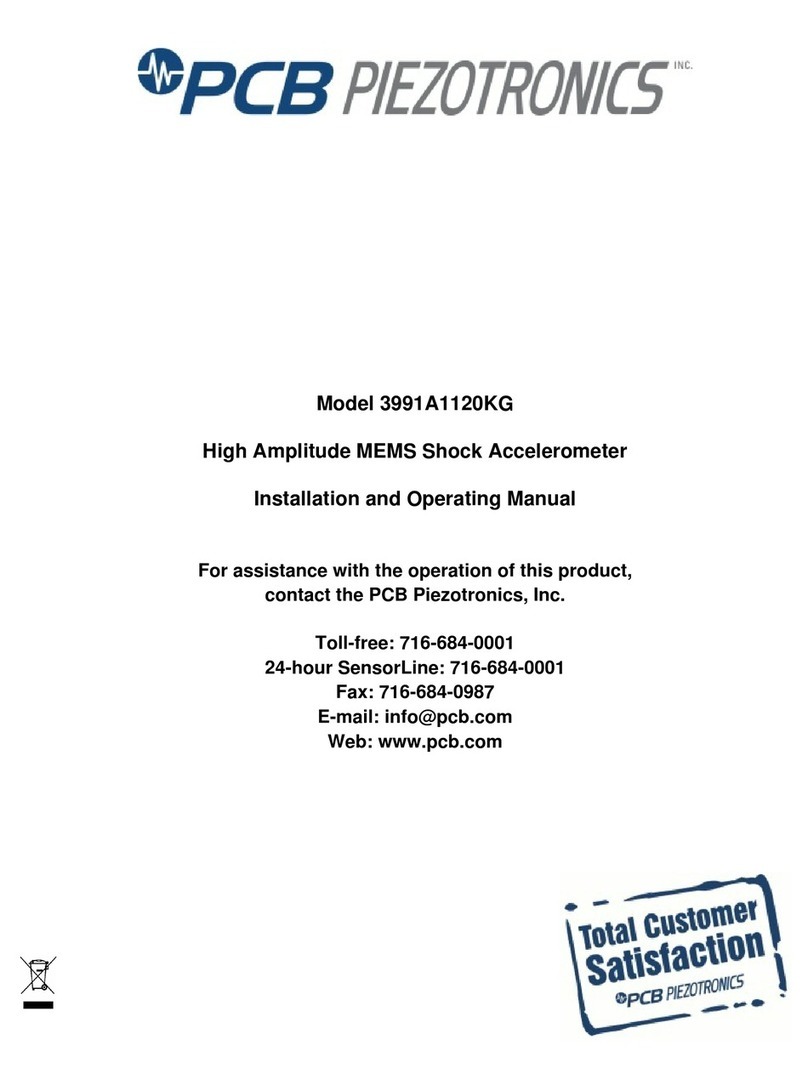
PCB Piezotronics
PCB Piezotronics 3991A1120KG Installation and operating manual
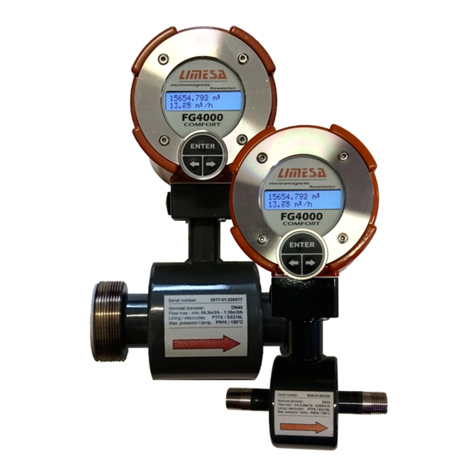
LIMESA meters
LIMESA meters FG4000 Installations and specifications
